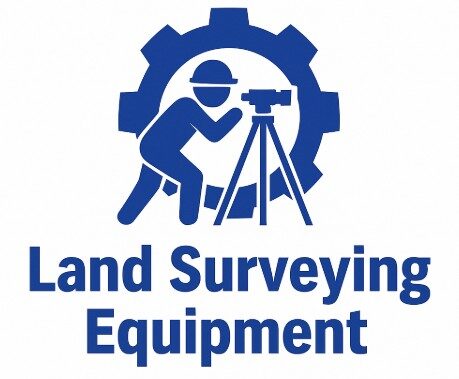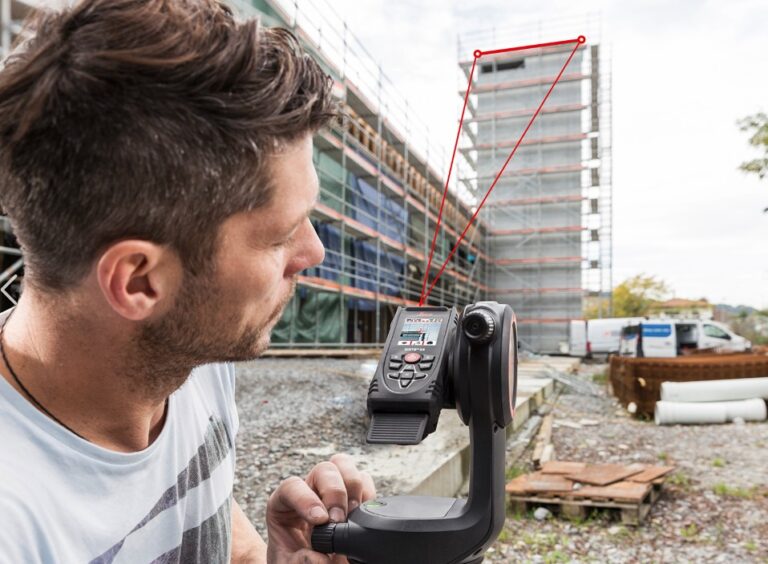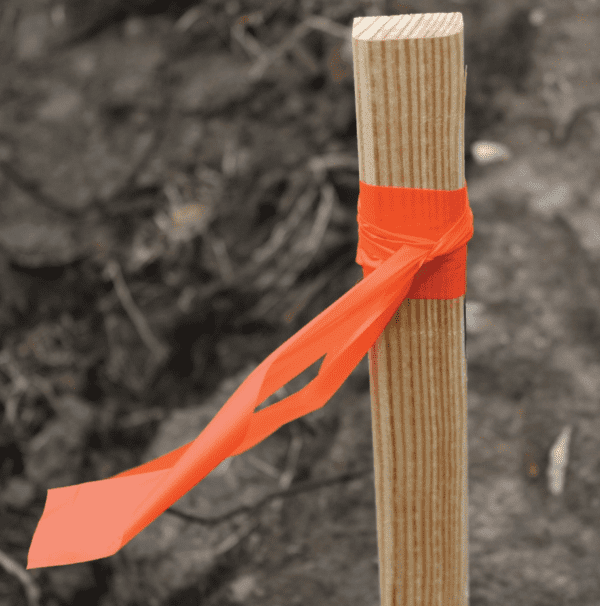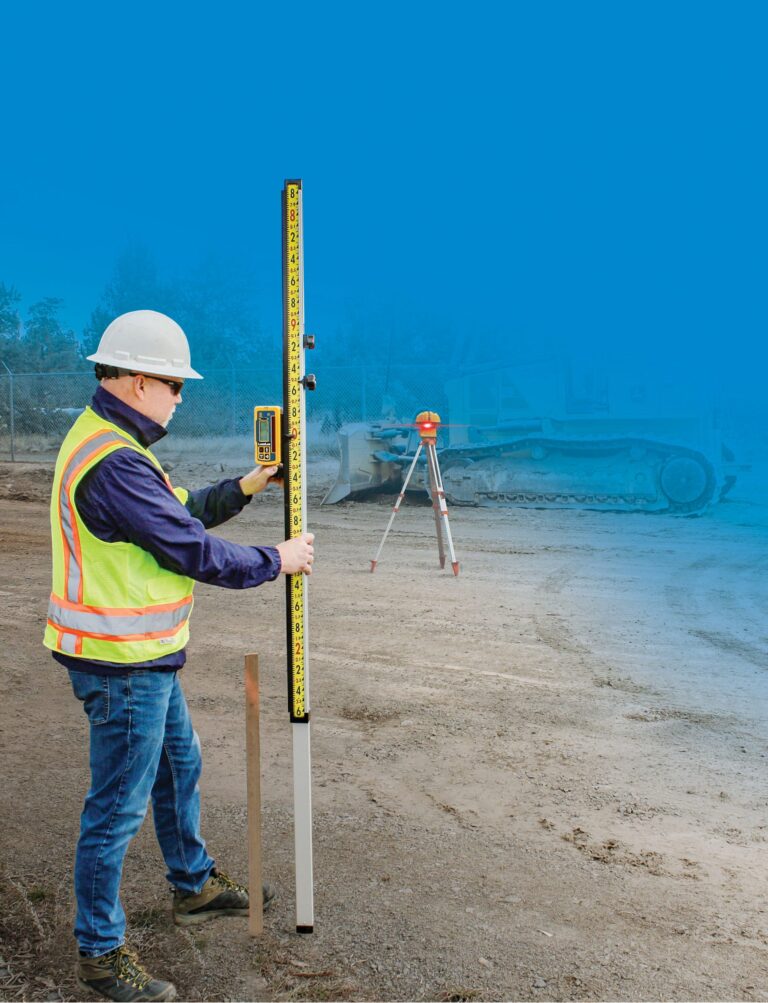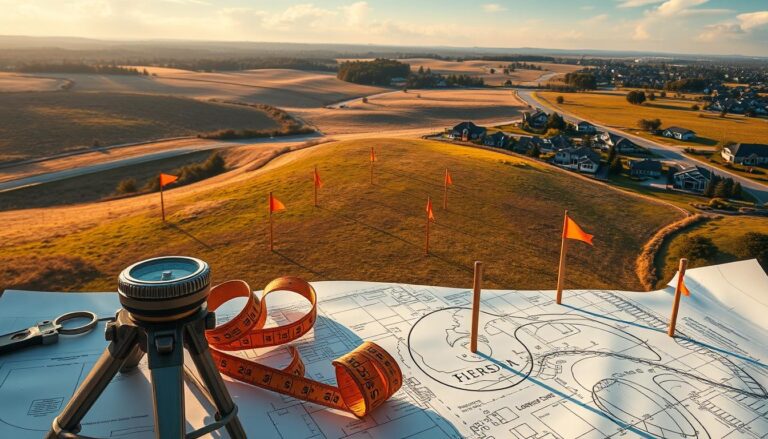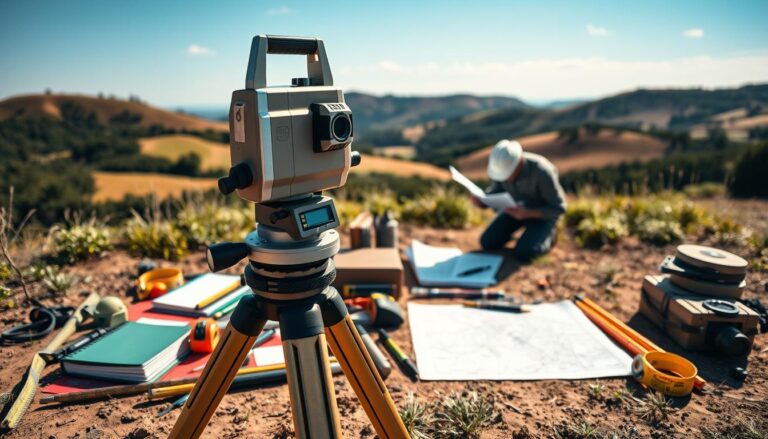What is a Topographic Survey? Why It’s Needed & How to Make One
A topographic survey is a detailed study and measurement of the Earth’s surface features, including natural and man-made elements. It involves determining the elevation of the land using advanced technologies such as global positioning systems (GPS) and electronic distance metering (EDM). These measurements are crucial for various industries, including construction, urban planning, and environmental monitoring.
The importance of topographic surveys lies in their ability to provide accurate data for project planning, design, and execution. By understanding the topography of an area, professionals can identify potential challenges and opportunities, ultimately leading to more informed decision-making.
Key Takeaways
- Topographic surveys measure the Earth’s surface features using GPS and EDM technologies.
- These surveys are essential for various industries, including construction and urban planning.
- Accurate topographic data enables professionals to make informed decisions.
- Topographic surveys help identify potential challenges and opportunities.
- The data collected is crucial for project planning, design, and execution.
The Fundamentals of Topographic Surveys
Topographic surveys provide detailed information about the Earth’s surface, including elevation levels, landforms, and other features that are crucial for various applications such as construction, urban planning, and environmental management. These surveys are conducted using specialized instruments and techniques to create accurate topographic maps.
Definition and Core Concepts
A topographic survey is a detailed survey that represents the three-dimensional Earth’s surface on a two-dimensional map. It involves measuring the elevation of various landforms and features, such as hills, valleys, and other natural or man-made features. The core concepts of topographic surveys include understanding the terrain, identifying significant land features, and accurately representing these features on a map.
Evolution of Topographic Surveying Practices
The practice of topographic surveying has undergone significant evolution, from traditional methods using theodolites and leveling instruments to modern techniques employing advanced technologies like GPS, LiDAR, and aerial photogrammetry. Modern topographic mapping techniques have improved the accuracy, efficiency, and detail of topographic surveys, enabling better decision-making in various fields. The integration of these technologies has transformed the field, allowing for more precise and comprehensive surveys.
What is a Topographic Survey and Why is One Needed and How to Make One
Topographic surveys are a fundamental component of land development and infrastructure projects. A topographic survey report displays a parcel’s property lines, outlines of the area’s surface features, terrain, and elevation. It includes contour lines, utilities, and natural attributes, providing a comprehensive understanding of the land.
Essential Elements That Define Topographic Surveys
A topographic survey is characterized by several essential elements, including the measurement of elevation, terrain features, and natural attributes. Contour lines are used to represent the three-dimensional Earth’s surface on a two-dimensional map. The survey report also includes information on utilities and other man-made features. These elements are crucial in understanding the land’s topography and making informed decisions about land development and infrastructure projects.
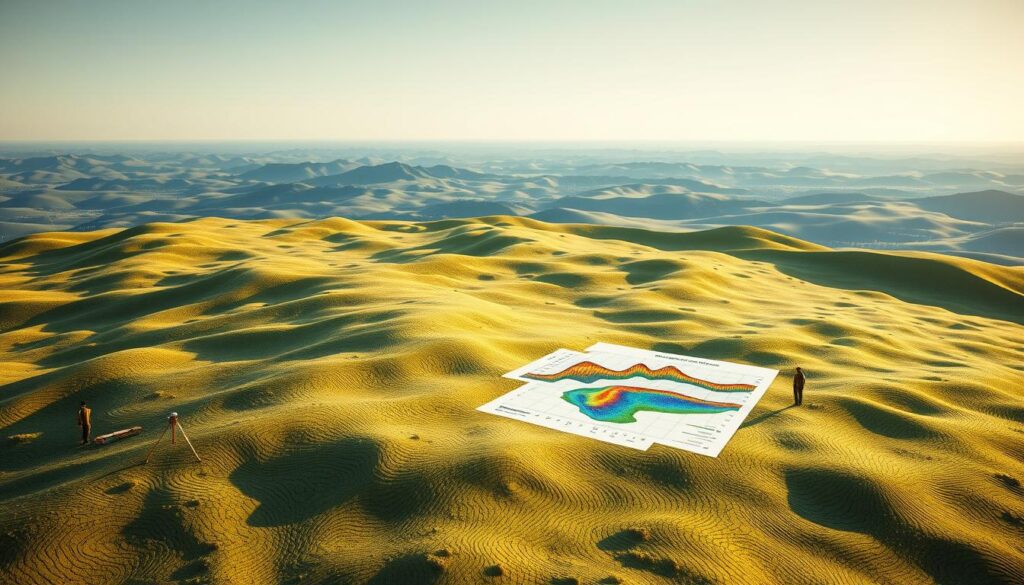
How Topographic Surveys Differ from Other Survey Types
Topographic surveys differ from other survey types in their focus on capturing the three-dimensional Earth’s surface. Unlike boundary surveys, which focus on determining property lines, topographic surveys provide a detailed understanding of the land’s terrain and elevation. They are also distinct from geodetic surveys, which focus on determining the precise location of reference points. The unique features of topographic surveys make them an essential tool for land development and infrastructure projects.
By understanding the essential elements of topographic surveys and how they differ from other survey types, professionals can make informed decisions about land development and infrastructure projects. The data collected during a topographic survey is critical in determining the feasibility of a project and identifying potential challenges.
Critical Applications of Topographic Surveys in Today’s World
In today’s world, topographic surveys are essential for informed decision-making in fields such as urban planning and natural resource management. The importance of topographic surveys lies in their ability to provide accurate and detailed information about the Earth’s surface.
Topographic surveys have numerous practical applications, and their significance can be seen in various industries. Two critical areas where topographic surveys play a vital role are urban planning and development projects, and environmental conservation and natural resource management.
Urban Planning and Development Projects
In urban planning and development projects, topographic surveys are crucial for designing and implementing infrastructure projects. They help identify potential challenges and opportunities, enabling planners to make informed decisions. By using advanced topographic mapping techniques, surveyors can create detailed maps of the terrain, which are essential for urban planning.
Environmental Conservation and Natural Resource Management
Topographic surveys also play a critical role in environmental conservation and natural resource management. By providing accurate data on the terrain and landforms, topographic surveys help conservationists and resource managers understand the complex relationships between the environment and human activities. This information is vital for developing effective conservation strategies and managing natural resources sustainably.
7 Compelling Reasons Why Topographic Surveys Are Necessary
The importance of topographic surveys cannot be overstated, as they provide essential data for informed decision-making. Topographic surveys are a vital component of various projects, including construction, environmental conservation, and urban planning.
1. Precise Land Documentation and Analysis
Topographic surveys enable precise land documentation and analysis, which is critical for understanding the terrain and its features. This information is used to create detailed maps and models that inform decision-making.
2. Informed Construction Planning and Design
Topographic surveys provide essential data for construction planning and design, allowing for more accurate and efficient project execution. By understanding the terrain, architects and engineers can design structures that are better suited to the land.
3. Accurate Legal Boundary Determination
Topographic surveys help determine accurate legal boundaries, which is critical for resolving disputes and ensuring that projects are executed within the correct boundaries.
4. Comprehensive Environmental Impact Assessment
Topographic surveys enable comprehensive environmental impact assessments, which are essential for understanding the potential effects of a project on the environment. This information is used to mitigate potential risks and develop more sustainable projects.
5. Strategic Infrastructure Development
Topographic surveys inform strategic infrastructure development by providing essential data on the terrain and its features. This information is used to design and construct infrastructure that is safe, efficient, and effective.
6. Effective Flood Risk Analysis and Mitigation
Topographic surveys enable effective flood risk analysis and mitigation by providing detailed information on the terrain and its features. This information is used to identify potential flood risks and develop strategies to mitigate them.
7. Detailed Historical Site Preservation
Topographic surveys are used to document and preserve historical sites, allowing for the creation of detailed records of these sites and their features. This information is essential for preserving cultural heritage and historical significance.
Topographic surveys provide a wealth of information that is used to inform decision-making and drive project success. By understanding the importance of topographic surveys, professionals can make more informed decisions and achieve better outcomes.
Professional Equipment for Conducting Topographic Surveys
Topographic surveying equipment has evolved significantly over the years, from traditional surveying instruments to cutting-edge digital technology. The choice of equipment depends on the specific requirements of the survey project, including the size of the area, terrain complexity, and desired level of accuracy.
Traditional Surveying Instruments
Traditional surveying instruments have been used for decades to conduct topographic surveys. These instruments include total stations, theodolites, and leveling equipment.
Total Stations and Theodolites
Total stations and theodolites are used to measure angles and distances between reference points. Total stations are electronic instruments that can measure distances and angles with high accuracy, while theodolites are used to measure angles between reference points.
Leveling Equipment
Leveling equipment is used to determine the difference in elevation between two or more points. This equipment is essential for ensuring that the survey data is accurate and reliable.
Cutting-Edge Digital Surveying Technology
In recent years, digital surveying technology has revolutionized the field of topographic surveying. This technology includes GPS/GNSS receivers and 3D laser scanners.
GPS/GNSS Receivers
GPS/GNSS receivers are used to determine the precise location of survey points. These receivers can provide accurate positioning data, even in areas with limited visibility.
3D Laser Scanners
3D laser scanners are used to capture detailed topographic data, including terrain features and vegetation. This technology is particularly useful for large-scale surveys and complex terrain.
Selecting Appropriate Equipment for Different Survey Projects
The choice of equipment depends on the specific requirements of the survey project. Land surveyors must consider factors such as the size of the area, terrain complexity, and desired level of accuracy when selecting equipment. A combination of traditional and digital surveying technology is often used to achieve the best results.
Comprehensive Guide to Conducting a Topographic Survey
Conducting a topographic survey requires meticulous planning and precise execution to capture the intricacies of the terrain. Topographic surveyors start by planning the survey process before conducting the survey. They use existing maps and finely calibrated measuring instruments to generate data.
1. Strategic Project Planning and Site Preparation
Strategic project planning is crucial for a successful topographic survey. This involves defining the survey objectives and scope, as well as conducting site reconnaissance and access planning.
Defining Survey Objectives and Scope
Defining the survey objectives and scope is the first step in planning a topographic survey. This involves identifying the purpose of the survey, the area to be surveyed, and the level of detail required.
Site Reconnaissance and Access Planning
Site reconnaissance and access planning are essential to ensure that the survey team can access the site safely and efficiently. This involves identifying potential obstacles and developing a plan to overcome them.
2. Systematic Field Data Collection Methods
Systematic field data collection is critical to capturing accurate and reliable data. This involves using grid-based surveying techniques and feature coding and attribution.
Grid-Based Surveying Techniques
Grid-based surveying techniques involve dividing the survey area into a grid and collecting data at regular intervals. This helps to ensure that the data is accurate and comprehensive.
Feature Coding and Attribution
Feature coding and attribution involve assigning codes and attributes to the features collected during the survey. This helps to provide context and meaning to the data.
3. Establishing Reliable Control Networks
Establishing a reliable control network is essential to ensure that the survey data is accurate and reliable. This involves identifying reference points and establishing a network of control points.
4. Accurate Measurement of Elevations and Terrain Features
Accurate measurement of elevations and terrain features is critical to capturing the intricacies of the terrain. This involves using precise measuring instruments and techniques to collect data on the terrain features.
By following these steps and using the right techniques and equipment, topographic surveyors can capture accurate and reliable data that can be used for a variety of applications, including urban planning, construction, and environmental monitoring. The data collected during the survey can be used to create detailed topographic maps and models that can be used to inform decision-making and drive project outcomes.
Innovative Topographic Mapping Techniques
Recent breakthroughs in technology have transformed topographic mapping, enabling surveyors to create highly accurate and detailed maps. The integration of advanced technologies has revolutionized the field, offering numerous benefits for various applications.
High-Resolution Aerial Photogrammetry
High-resolution aerial photogrammetry is a technique used to create detailed topographic maps by capturing overlapping aerial images. This method allows for the extraction of precise topographic information, including terrain features and elevation data. The resulting maps are highly accurate and can be used for a range of applications, from urban planning to environmental monitoring.
Advanced LiDAR Applications for Topographic Mapping
LiDAR (Light Detection and Ranging) technology has become increasingly popular in topographic mapping due to its ability to capture highly accurate elevation data. Advanced LiDAR applications involve the use of airborne or terrestrial LiDAR systems to create detailed topographic maps. These maps can be used to analyze terrain features, monitor land use changes, and identify potential environmental hazards.
Unmanned Aerial Vehicle (UAV) Survey Methods
Unmanned Aerial Vehicles (UAVs), also known as drones, are being increasingly used in topographic surveying due to their flexibility and cost-effectiveness. UAV survey methods involve the use of drones equipped with cameras or other sensors to capture aerial data. This data can be used to create detailed topographic maps, monitor land use changes, and inspect infrastructure.
The use of innovative topographic mapping techniques, such as high-resolution aerial photogrammetry, LiDAR, and UAV survey methods, has transformed the field of topographic surveying. These techniques offer numerous benefits, including increased accuracy, improved efficiency, and enhanced decision-making capabilities.
Effective Topographic Survey Data Processing and Analysis
Effective data analysis is the backbone of any successful topographic survey. The data generated by the survey is processed and quality-checked before it is delivered to a client. Surveyors use industry-standard software to process topographic data, ensuring accuracy and reliability.
Industry-Standard Software for Topographic Data Processing
Topographic survey data processing relies heavily on specialized software. Two primary categories of software are used: CAD programs and specialized survey processing software.
AutoCAD Civil3D and Similar CAD Programs
AutoCAD Civil3D is a popular choice among surveyors due to its robust capabilities in handling complex topographic data. It allows for the creation of detailed digital models of the terrain, facilitating accurate analysis and decision-making.
Specialized Survey Processing Software
Specialized survey processing software, such as Trimble Business Center and Leica GeoMoS, offer advanced tools for processing and analyzing topographic survey data. These programs provide a range of features, including data editing, point cloud processing, and surface modeling.
Generating Accurate Digital Elevation Models (DEMs)
Digital Elevation Models (DEMs) are a crucial output of topographic survey data processing. DEMs provide a digital representation of the terrain, allowing for the analysis of slope, aspect, and elevation. Accurate DEMs are essential for a wide range of applications, including flood risk analysis and infrastructure planning.
Techniques for Interpreting and Validating Topographic Data
Interpreting and validating topographic data require a combination of technical expertise and knowledge of the survey area. Techniques such as cross-validation and data comparison are used to ensure the accuracy and reliability of the data. By applying these techniques, surveyors can provide high-quality data that meets the needs of clients.
Developing Professional Topographic Survey Reports
A well-crafted topographic survey report is essential for informed decision-making in various industries, including construction, urban planning, and environmental conservation. The report provides a comprehensive overview of the terrain, including contour lines, utilities, and natural attributes, allowing stakeholders to make informed decisions.
Critical Components of a Comprehensive Survey Report
A comprehensive survey report should include several critical components. These components ensure that the report is accurate, reliable, and useful for decision-making purposes.
Technical Documentation Requirements
The technical documentation should include detailed information about the survey methodology, equipment used, and data collection procedures. This information is crucial for verifying the accuracy and reliability of the survey results. Accurate technical documentation is essential for ensuring the quality of the survey report.
Quality Assurance Statements
Quality assurance statements are also vital components of a comprehensive survey report. These statements provide assurance that the survey has been conducted in accordance with established standards and guidelines, and that the results are reliable and accurate. Including quality assurance statements enhances the credibility of the survey report.
Effective Data Visualization and Presentation Methods
Effective data visualization and presentation methods are critical for communicating complex survey data to stakeholders. These methods enable stakeholders to quickly understand the survey results and make informed decisions.
Contour Mapping Techniques
Contour mapping techniques are used to create detailed topographic maps that illustrate the terrain’s features and characteristics. These maps are essential for understanding the terrain’s slope, elevation, and other features. Contour mapping is a crucial aspect of topographic surveying.
3D Modeling and Rendering
3D modeling and rendering techniques are used to create detailed, three-dimensional models of the terrain. These models can be used to visualize complex survey data and provide a more detailed understanding of the terrain’s features and characteristics. 3D modeling enhances the visualization of survey data.
Overcoming Common Challenges in Topographic Surveying
The process of topographic surveying is fraught with challenges, including environmental and physical obstacles, that require careful planning and execution. Topographic surveyors face various challenges, including difficult terrain, weather conditions, and technical issues, which can impact the accuracy and reliability of the survey data.
Navigating Environmental and Physical Obstacles
Environmental and physical obstacles can significantly hinder the progress of a topographic survey. Surveyors must navigate challenging terrain, including dense vegetation, steep slopes, and water bodies. Utilizing advanced surveying equipment, such as GPS and LiDAR technology, can help overcome these obstacles.
Surveying in Challenging Terrain
Surveying in challenging terrain requires specialized equipment and techniques. For instance, using UAVs or drones can provide a safe and efficient way to survey areas that are difficult to access. Additionally, surveyors can employ traditional surveying methods, such as triangulation and traversing, to gather data in challenging terrain.
Weather and Seasonal Considerations
Weather and seasonal changes can also impact the accuracy of a topographic survey. Surveyors must consider the effects of weather conditions, such as heavy rainfall or snow cover, on the survey data. By planning surveys during optimal weather conditions and using advanced equipment, surveyors can minimize the impact of weather-related challenges.
Resolving Technical and Data Management Issues
Technical issues and data management problems can also arise during a topographic survey. Surveyors must ensure that their equipment is calibrated and functioning correctly. Data management is also critical, as surveyors must process and analyze large datasets to produce accurate and reliable results.
Calibration and Accuracy Concerns
Calibration and accuracy are crucial aspects of a topographic survey. Surveyors must ensure that their equipment is calibrated regularly to maintain accuracy. Using advanced software and data processing techniques can also help to improve the accuracy of the survey data.
Data Integration and Format Compatibility
Data integration and format compatibility are also essential considerations in topographic surveying. Surveyors must ensure that their data is compatible with various software and systems. Using standardized data formats and protocols can help to facilitate data integration and reduce errors.
Emerging Trends Shaping the Future of Topographic Surveying
The future of topographic surveying is being reshaped by emerging trends that promise to revolutionize the industry. As technology continues to advance, the field of topographic surveying is becoming increasingly sophisticated, enabling more accurate and efficient data collection and analysis.
Next-Generation Survey Technologies
Next-generation survey technologies are transforming the way topographic surveys are conducted. These advancements include the use of advanced sensors, improved data processing algorithms, and innovative data collection methods.
Mobile Mapping Systems
Mobile Mapping Systems (MMS) are becoming increasingly popular in topographic surveying. MMS involves the use of a mobile platform, such as a vehicle or a backpack, equipped with a range of sensors, including GPS, LiDAR, and cameras, to collect data. This technology allows for the rapid collection of high-density, accurate data, reducing the time and cost associated with traditional surveying methods.
Artificial Intelligence in Survey Data Processing
Artificial Intelligence (AI) is being integrated into survey data processing, enabling faster and more accurate data analysis. AI algorithms can automatically identify features and patterns in the data, reducing the need for manual interpretation and improving the overall quality of the survey results.
Integration with Geographic Information Systems (GIS) and Building Information Modeling (BIM)
The integration of topographic surveying with GIS and BIM is becoming increasingly important. GIS allows for the analysis and visualization of survey data in a spatial context, while BIM enables the creation of detailed, data-rich models of buildings and infrastructure. The integration of these technologies enables surveyors to provide more comprehensive and accurate data, supporting better decision-making in a range of applications, from urban planning to construction and infrastructure development.
As these emerging trends continue to shape the future of topographic surveying, the industry can expect to see significant improvements in the accuracy, efficiency, and cost-effectiveness of survey data collection and analysis. The integration of next-generation survey technologies with GIS and BIM will enable surveyors to provide more comprehensive and accurate data, supporting better decision-making in a range of applications.
Conclusion
Topographic surveys play a vital role in various industries, including construction, geology, and environmental conservation. The importance of topographic surveys lies in their ability to provide accurate and detailed information about the terrain, enabling informed decisions and precise planning.
The necessity of topographic surveys is evident in their numerous applications, from urban planning and development projects to environmental conservation and natural resource management. By understanding the topography of an area, professionals can identify potential risks, opportunities, and challenges, ultimately leading to better design and construction outcomes.
In conclusion, the importance of topographic surveys cannot be overstated. As technology continues to evolve, the methods and techniques used in topographic surveying will also advance, leading to even more accurate and detailed surveys. By recognizing the significance of topographic surveys, we can appreciate their role in shaping our built environment and conserving our natural resources.
